Advertisement
The Difference Between the Comparative and Common Size Statements of the balance sheet is on the basis of the values shown in the statement. In the comparative statement, the absolute value of assets and liabilities are shown side by side but in the common size statement, the percentage of individual assets and liabilities on the basis of balance total. The full meaning is explained in this article.
Advertisement
What is the Comparative Statement:
The comparative statements are that statement which shows the comparison between the component of the financial statement of the business for the period of more the two years. The components of the two or more years are shown side by side on the same page and then calculate the change from the base year of all the elements. It is the tools for the analysis of the financial statements of the business.
Comparative Statements – Balance Sheet & Profit and Loss
What is the Common Size Statement
The Common-Size statement is that statement that shows the percentage to a common base of all accounts of the financial statement of the business for the period of more than two years. The components of the two or more years are shown side by side in vertical order on the same page and then calculate the percentage on the common base of net sales of both years of all the elements. It is the tools for the analysis of the financial statements of the business.
Advertisement-X
Common-Size Statements – Balance Sheet
Chart of Difference between Comparative and Common Size Statement: –
Basis of Difference | Comparative | Common Size |
| Meaning | The comparative statements are that statement which shows the comparison between the component of the financial statement of the business for the period of more the two years | The Common-Size statement is that statement which shows the percentage to a common base of all accounts of the financial statement of the business for the period of more than two years. |
| Base of Comparison | In this, the value of the basis year compared with the value of the current year. | In this, the value of the current year compared with the current year. |
| Number of Years required | Minimum Financial Statements of two years are required. | The financial Statement of One year is required. |
| Results expressed in | The results are expressed in the pictorial as well as percentage form. | The results are expressed in the percentage form. |
| Type of Comparision included | It included both types of Intra and inter-firm comparison. | It included only inter-firm comparison. |
| Helps in | It helps in the decision making for the management for future planning. | It helps the stakeholder in the decision of the investment. |
| Useful in | It is useful to compare the current year results with the prevision year. | It is useful to compare the current year results with its competitors’ results. |
Download the chart in PNG and PDF:-
If you want to download the chart please download the following image and PDF file:-
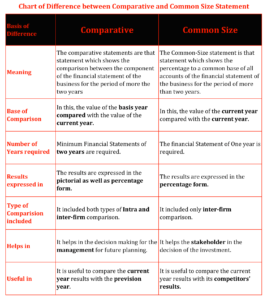

Conclusion:
Thus, both terms have the only main difference in the basis of the calculation. In the comparative statement, the base year values are compared with the current year and in the common size statement, the value of the current year compared by calculating the share of the percentage of the particular item out of the total of the balance sheet or net sale if comparing profit and loss account.
Thanks for reading the topic.
Advertisement-X
please comment your feedback whatever you want. If you have any questions please ask us by commenting.
Check out T.S. Grewal’s +2 Book 2020 @ Official Website of Sultan Chand Publication
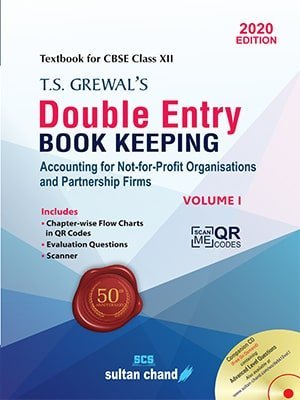





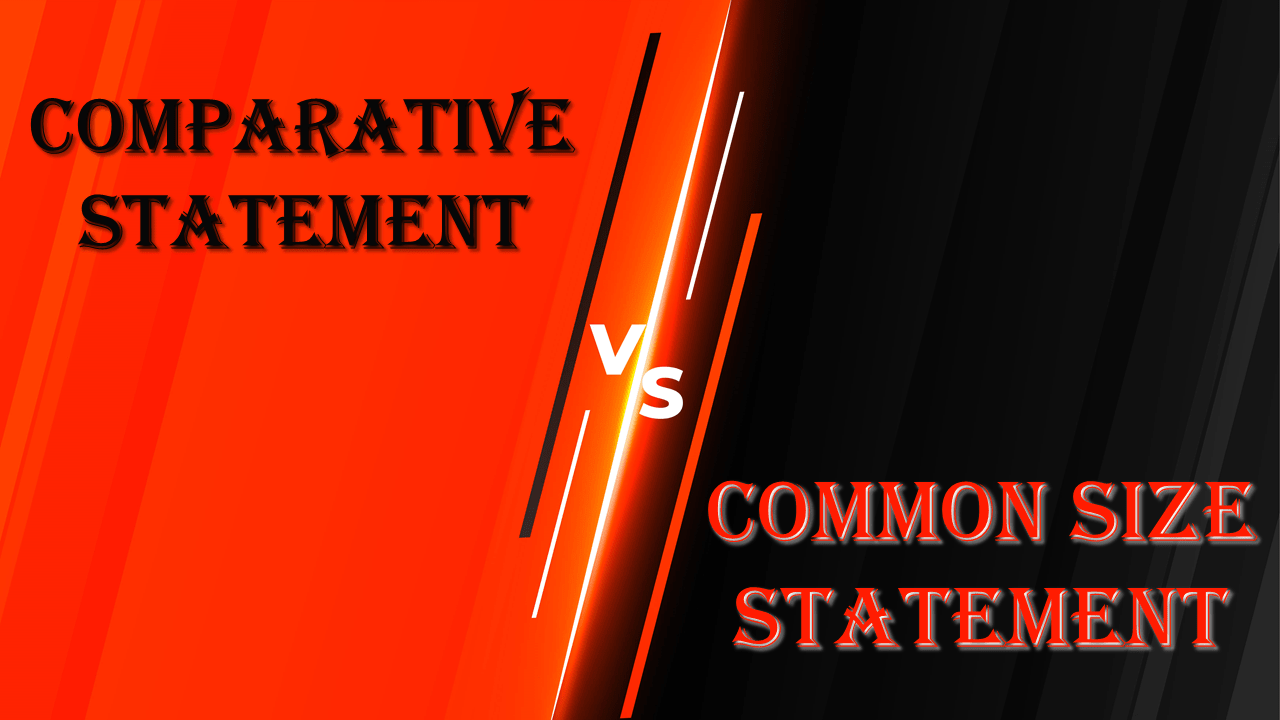

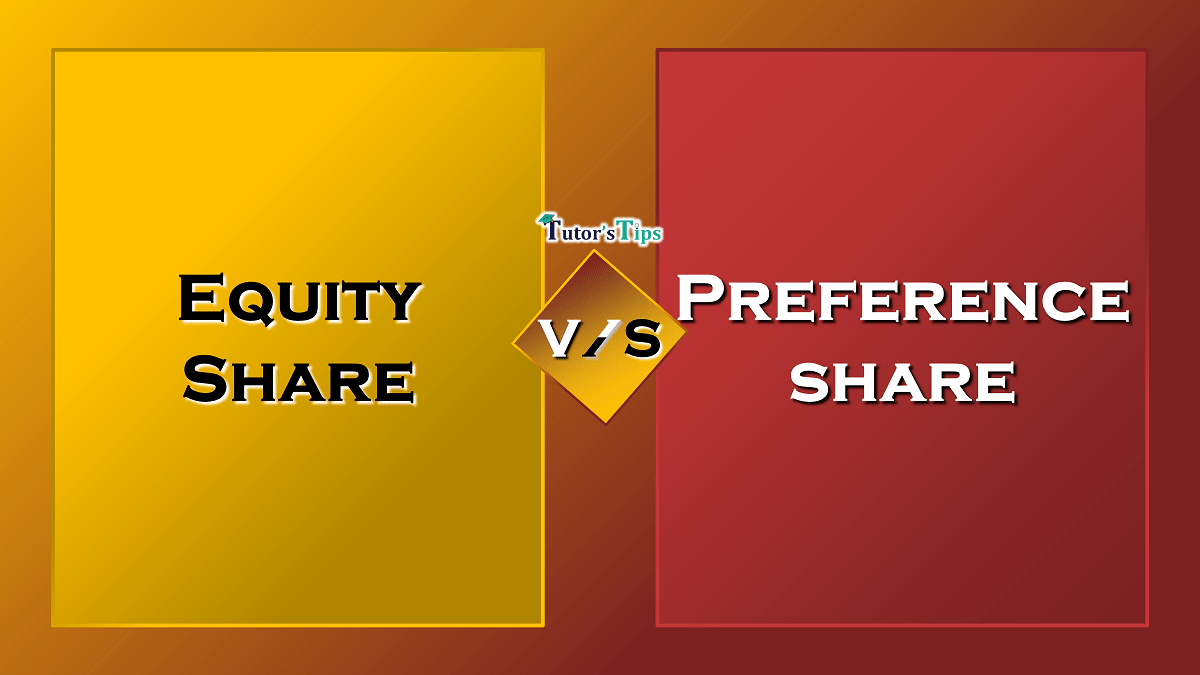
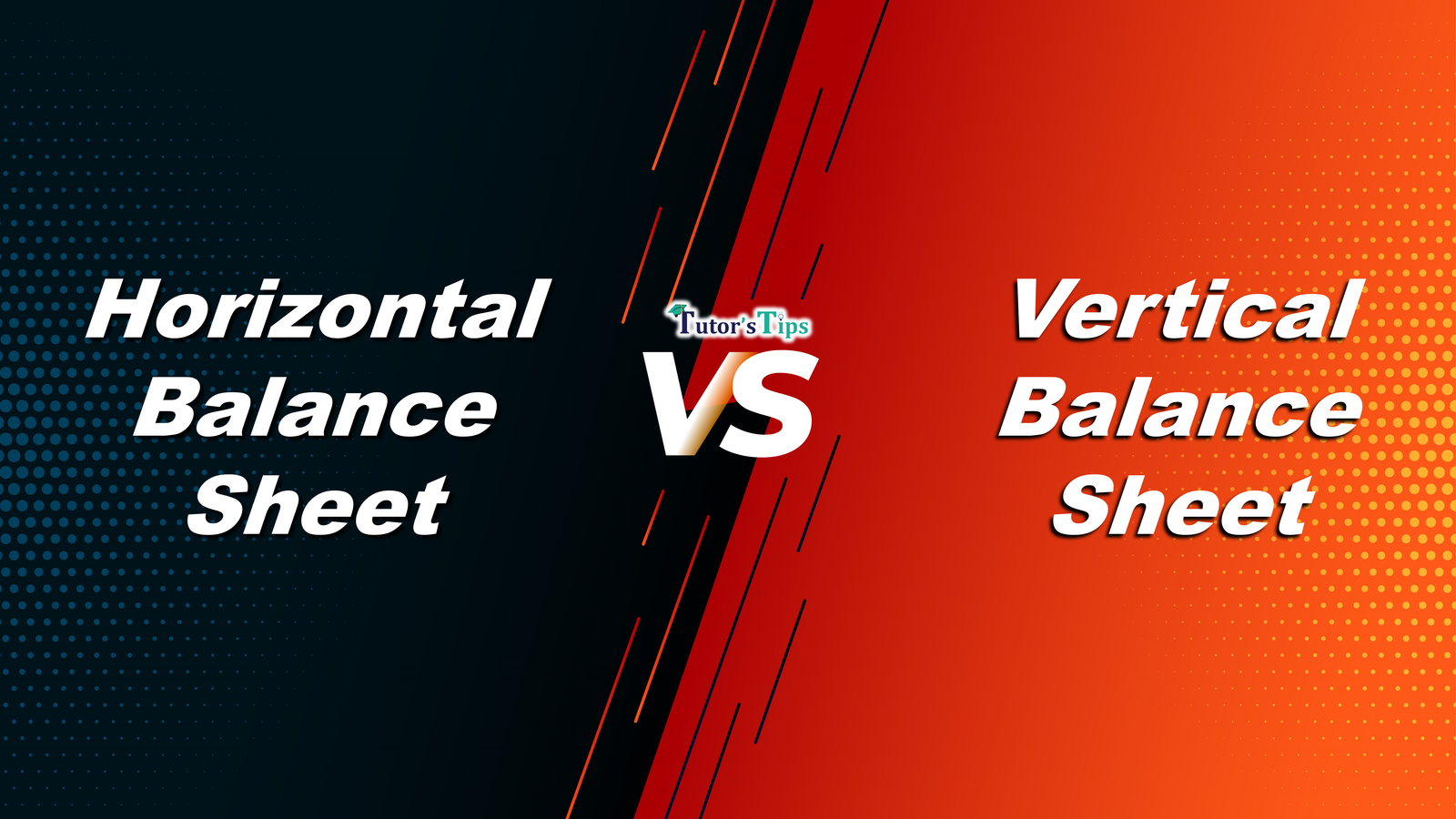

Leave a Reply